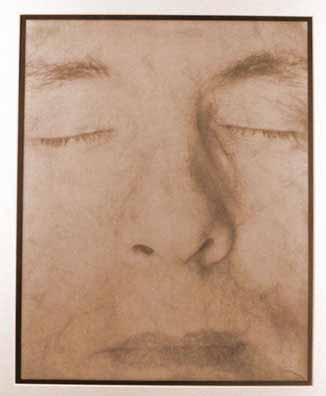Jan van Leeuwen
dal 19/10/2000 al 2/12/2000
Segnalato da
19/10/2000
Jan van Leeuwen
Gallery 24, New York
Jan van Leeuwen works almost exclusively in alternative, 19th-century photographic processes, including the brown-toned Van Dyke Kallitype and blue-toned Cyanotype, which was developed by Sir John Herschel in 1840, but is now most commonly used to create blueprints. Rare among contemporary photographers, these historical processes enable van Leeuwen's work to span the centuries technically as well as thematically.

Jan van Leeuwen works almost exclusively in alternative, 19th-century photographic processes, including the brown-toned Van Dyke Kallitype and blue-toned Cyanotype, which was developed by Sir John Herschel in 1840, but is now most commonly used to create blueprints. Rare among contemporary photographers, these historical processes enable van Leeuwen's work to span the centuries technically as well as thematically.
Born in 1932, van Leeuwen endured, from the ages of 8 to 12, the Nazi occupation of Amsterdam. Images of his classmates being taken from school and neighbors being apprehended on the street left van Leeuwen wrought with a tremendous mix of confusion, sadness, anger, and guilt for surviving the war "because he was not Jewish." More than a half-century later, these themes saturate his work.
The series of Cyanotypes entitled Self -Portraits were first recognized as "images of war" by Dr. Thorsten Rodiek, Director of the Museum of Cultural History in Osnabruck, Germany. The expressions and quality of light in each portrait recall the flashes of light cast by an exploding bomb. In each arresting image, van Leeuwen's face serves as a canvas on which his emotions erupt. Here, the Cyanotypes' blue tones effectively suggest melancholy and mourning, reminding viewers of the devastating effects of war on children.
In the Barbed Wire suite, van Leeuwen is again the model, but these images are not self-portraits. The sequence of phantom-like figures unfolds behind a single line of barbed wire, representing the profound suffering of those whose "noses pressed against the fence." Thus, the images not only function as a memorial to Holocaust victims but also serve as a powerful warning against discrimination, a lesson as relevant today as it was a half-century ago.
Whereas van Leeuwen's Self-Portraits and Barbed Wire series might best be described as an emotionally raw style of portraiture, his Still-Life suite represents a serene but related tangent: "Because I mainly work in the intimate enclosure of my studio, the step from self-portraits to still lifes was a very short one. My most important subjects in still lifes are single flowers--in fact I make portraits of these flowers, and as every portrait contains elements of the self of its maker, my flower portraits have a strong connection to the portraits and images of myself. Whereas I regard my self-portraits as part of the contemporary art scene, I see my still lifes as part of a long Dutch tradition." Van Leeuwen's images thus pause at the crossroads of the traditional and the contemporary, the precise and the nebulous, the sacred and the profane.
Jan van Leeuwen is an internationally exhibited artist, and his work appears in museums around the world, including the Musee National d'art Moderne, Paris; the Museum of Fine Arts, Houston; the Cleveland Museum of Art; the Museum of Photographic Arts, San Diego; the Israel Museum, Jerusalem; the Museum of Dutch Photography, Sittard, Holland; the Deutsches Historisches Museum, Berlin; the Musee de la Photographie, Charleroi, Belgium; and the Holocaust Museum, Houston.
For more information contact Yossi Milo
Gallery 24
552 West 24th Street
Third Floor
New York, NY 10011
T 212 414 0370
F 212 414 0371



